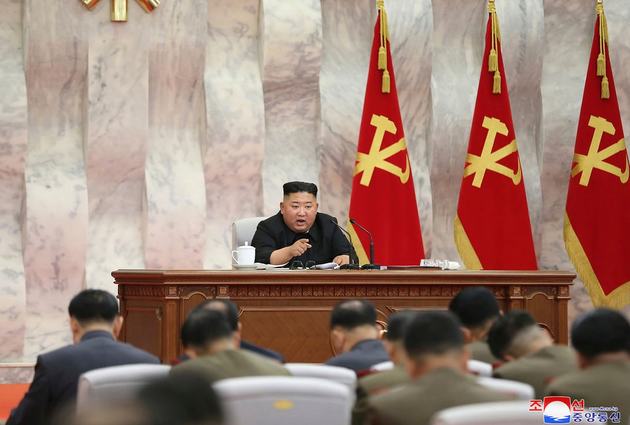After another weekslong absence from public view, North Korea’s leader, Kim Jong-un, has convened the country’s top military-governing body, outlining “new policies for further increasing” its nuclear capabilities and promoting top weapons officials, the North’s state-run media said on Sunday. New York Times reports in its article Kim Jong-un Moves to Increase North Korea’s Nuclear Strength that Mr. Kim’s attendance at the meeting was his first public activity reported by the North Korean media in three weeks.
A weekslong absence from public view last month prompted rumors that he might have health issues or other trouble, and the repeat this month sparked similar rumors. During the meeting of the Central Military Commission of the ruling Workers’ Party of Korea, Mr. Kim was said to have promoted Ri Pyong-chol to vice chairman of the commission, expanding his influence. Mr. Ri has been in charge of building nuclear weapons and their delivery missiles.
Mr. Kim also promoted nearly 70 general officers, elevating Pak Jong-chon, a career military commander specializing in artillery and missile forces, to vice marshal, only a year after he was made a four-star general and chief of the North Korean army’s general staff.
Both Mr. Ri and Mr. Pak were among North Korean officials whose roles appeared to expand under Mr. Kim’s government as he refocused on expanding his country’s nuclear and missile capabilities following the collapse of his diplomacy with President Trump. “Set forth at the meeting were new policies for further increasing the nuclear war deterrence of the country and putting the strategic armed forces on a high alert operation,” the North’s official Korean Central News Agency reported on Sunday. “Taken at the meeting were crucial measures for considerably increasing the firepower strike ability of the artillery pieces of the Korean People’s Army.”
The news agency did not say when the meeting took place, although it usually reports Mr. Kim’s public activities a day after they happen. Nor did it clarify what Mr. Kim’s new policies on his nuclear weapons might be.
Since taking over his country following the death of his father and predecessor, Kim Jong-il, in 2011, Mr. Kim has accelerated his country’s nuclear weapons and missile programs. North Korea has conducted the last four of its six underground nuclear tests under his rule. It also flight-tested three intercontinental ballistic missile tests in 2017.
Mr. Kim then switched to diplomacy, meeting Mr. Trump in Singapore in June 2018 and again in Hanoi, Vietnam, in February last year. But their meetings failed to reach an agreement on how to eliminate North Korea’s nuclear weapons programs or when to ease United Nations sanctions against the North.
In May last year, North Korea broke an 18-month hiatus in weapons tests, conducting 18 tests of mostly short-range ballistic missiles and rockets since. In December, it conducted two ground tests at its missile-engine test site to bolster what it called its “nuclear deterrent.” Mr. Pak at the time said that the data from the tests would help develop “another strategic weapon.”
In December, Mr. Kim said that his country no longer felt bound by its self-imposed moratorium on nuclear and long-range missile tests, and threatened to unveil a new strategic weapon.
Mr. Kim’s weekslong absence from public view last month inspired speculation that he might be brain-dead or otherwise incapacitated. He dispelled such rumors by visiting a fertilizer factory on May 1. The military commission meeting was his first reported public activity since then.






